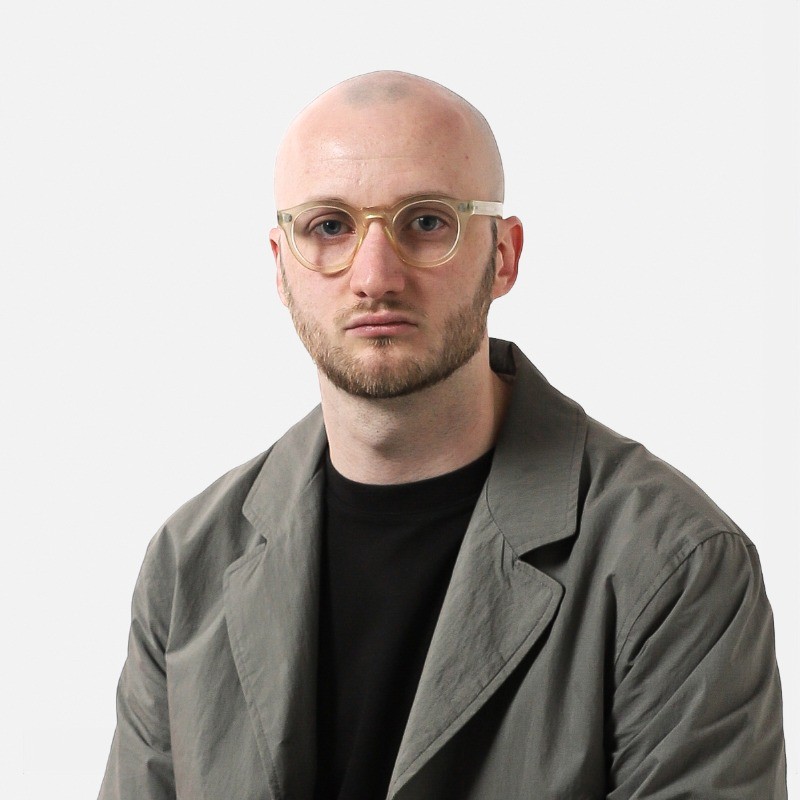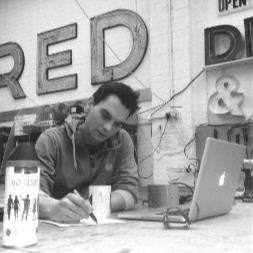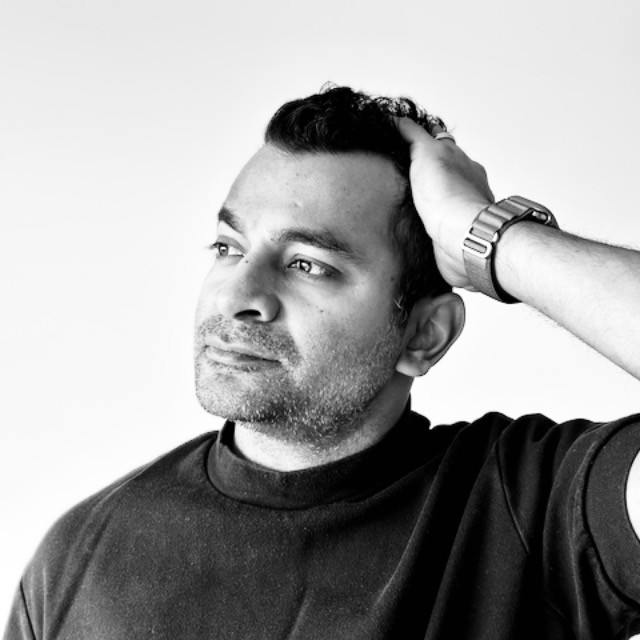There’s no doubt we’re at the dawn of an AI-driven jobs revolution: AI is affecting how we work, what tasks we work on, and if we can even find work at all. But there’s plenty of debate about how much AI will ultimately affect those of us employed in creative industries: will AI take over completely? Or will its lofty promises fail to be delivered?
We spoke to five seasoned 3D design professionals to find out. Each one has ample experience working and teaching in the 3D design industry. The consensus? You don’t have to worry about becoming completely obsolete just yet – but you absolutely need to get prepared.
Meet the experts


Will Gibbons’s career includes a position as a KeyShot Global Training Specialist and roles providing product rendering and animation services for global companies such as 3M and Peloton. He is now a sought-after KeyShot Studio trainer with his own KeyShot Masterclass series.
William Vaughan is New Balance’s Director of 3D Visualization. He has also worked on toys, games, and films for Pixar and Nickelodeon. An educator, he created Pixel Fondue’s KeyShot Studio series “Vaughan in 60 seconds.”



Liam Martin has worked as a 3D artist/director and lecturer in product design. He co-founded Visune, which provides professional 3D assets, including ready-to-render interior and studio scenes, and drag-and-drop material and decorative resources.
Mik Onody is a Design Director who has experience in 3D spatial design, interior design, and architectural visualizations. They have worked at various companies such as Hirsch & Mann, MansArt, Goodwin + Goodwin, and MANSART Design.
Mads Svanegaarde is an industrial designer and visualizer based in Denmark. He provides design services via his firm, Designersvane, and regularly advises KeyShot developers.
How AI is changing 3D design
For some designers already on board, using AI means faster design conceptualization. “Sourcing creative assets can be done faster and more cost-effectively with image-generation,” Gibbons says. For others, AI’s strength lies in refinement. One example is what Martin calls AI upscaling, in which his designers add the final effects: “We still have control over the composition, lighting and materials, but let AI add the finishing touches.”
Beyond post-production, AI is influencing creative thinking too. Expert designers like Svanegaarde use AI tools to not only test ideas but also broaden visual exploration. “I have noticed how I often tend to test out my renders with a video generator model like Veo or Luma or Hailuo, to cut back on me trying to animate the scene myself,” he says.
Will AI replace 3D designers?
Martin believes AI can’t replace human artists, but he does think it’ll be a disruptor. “The threshold for accuracy is much higher when it comes to products. I can’t see 3D artists being replaced in the near future,” he says. “You can quickly generate an image of a chair and a 3D model too, but it’s going to be a huge leap to replace the designer who brings it to life.”
Vaughan sees disruption already happening: “Ironically, it’s the creative and conceptual parts where the human touch is most essential that AI is starting to disrupt the most.”
Gibbons and Onody see the future as one of rebalanced collaboration, where AI augments and doesn’t merely replace. By using AI to automate tedious technical tasks, 3D artists can focus on more meaningful creative work. “Creative professionals should be ready to use the appropriate tools to outsource those tedious tasks to,” Gibbons says. “This should leave them free to focus more on ideas, narrative, unconventional problem-solving and collaborating with humans across disciplines and departments.”
Onody adds that AI can produce striking visuals, especially when precision isn’t required, and performs best when allowed to operate freely. But surrendering creative control goes against the very foundation of the design industry.
The top 3D design processes AI will disrupt
Vaughan tells KeyShot that every aspect of 3D production is vulnerable to some degree of automation, but ideation, rendering and texturing are the most ripe for disruption.
Rendering
Svanegaarde thinks rendering might be the first bastion to fall. He cautions that designers would need proper input as composition and low poly assets are still great-to-haves for a solid render work.
Ideation
All five experts interviewed agree that human ideation for 3D design might just be on the brink of replacement. Onody ensures that before using AI, he starts with a clear concept.
Texturing
AI tools will become capable of completing a wide variety of tasks, says GIbbons. However, more mundane ones like UV unwrapping, which Vaughan calls “necessary but tedious” for texturing, will be quickly replaced. “Nobody wins awards for UV unwrapping a model, but it’s necessary for texturing in some cases,” Gibbons explains. “Currently, it’s a speed bump that slows down the process of creating fine images. This is a great task to put AI tools to work on.” Mik concurs that texturing tasks as well as environment creation can be effectively supported by AI.
3D design trends over the next five years
As AI becomes more sophisticated and accessible, it is tracking to create trends that could totally upend the industry.
Increased job anxiety within the industry
AI is accelerating anxiety across digital design fields and 3D design isn’t an exception. “In some industries, especially digital ones like UX or UI, there’s already serious job anxiety,” says Onody. ”People are wondering what their future holds. AI can improve efficiency, but it’s also creating a lot of anxiety and rapidly changing the skills artists are expected to have,” adds Gibbons.
Expect smaller teams and leaner pipelines
As operating costs remain a key concern, companies may shrink teams and fully integrate AI.
“We’re already witnessing both replacement and redefinition happening simultaneously with the rise of AI,” says Vaughan. “Several of my longtime friends who once had thriving careers as freelance artists, have seen their client’s work diminish or disappear entirely. Looking ahead, I see AI enabling smaller teams to handle what previously required much larger ones.”
AI’s capabilities will become sharper
Gibbons points to the rapid leap from basic image generation to text-to-video that produces realistic people and speech. “It’s easy to assume there will be no need for people. But historically, the final 10% of development costs many times more and takes longer than the first 90%. So, advancements will seem more incremental soon.”
Market demands will shape AI adoption
Audiences who are less concerned with precision will become more open to AI-generated work, according to Gibbons. “The less-discerning the audience, the more acceptable AI-generated content will be. Take children’s shows: you can certainly instruct an AI to generate educational programming for 4-year-old children who speak Spanish (for example) and I’m sure AI would do a passable job, and at a far lower cost than paying humans to do this.”
Shift in 3D design roles
Human touch will always be essential and this is why 3D designers will shift from doers to creative curators and directors. Artists will become orchestrators of AI-generated outputs, guiding the vision and emotional resonance behind designs, while AI manages the technical grunt work.
The transition from human-only to human-AI collaboration is inevitable, but Vaughan stresses there needs to be careful management: “Realistically, the industry should already be preparing for this shift by redefining skill sets, focusing on creative decision-making, and training artists to work alongside AI rather than compete with it. The challenge will be to ensure that this transition doesn’t come at the expense of creative integrity.”
How can designers adapt to the AI shift?
Experts recommend three ways to stay ahead.
Reshape your thinking
Even if you have no desire to entirely revamp your workflow, try to be open to both old and new ways of working, experimenting and learning what benefits your day-to-day processes. “I believe that any professional in the creative industries, whether a 3D artist or designer, should understand and appreciate past techniques, using them where appropriate, while also embracing new technologies as they emerge,” Onody says.
Constantly evaluate the value you offer
Designers should routinely assess the value they bring to their organization to stay ahead of the curve. “If your job seems to be ripe for AI-consumption, then it’s time to think about how you can ensure you bring value that AI-tools can not as easily replace,” Gibbons says.
Widen your skillset
Martin proposes prompt engineering as a strong start: “Learn prompt engineering and squeeze more out of text-based AIs and gain greater control.” Mads suggests:
- Using image generators for early-stage inspiration
- Generating seamless, tileable textures
- Using LLMs like ChatGPT to brainstorm storyboards and design language
- Testing animation ideas with video generators—aspirational and practical
Gibbons adds that becoming familiar with AI tools does not necessarily mean developing an overreliance on them, but understanding how they fit into modern workflows. “Broadening into areas like creative direction, storytelling, and emotion-driven design might also help, since those are still domains where human judgment, taste, and intuition matter deeply,” he says. “For now.”







